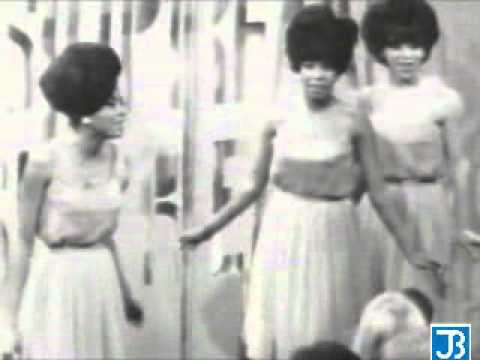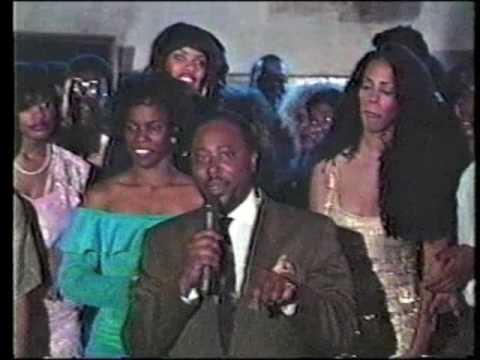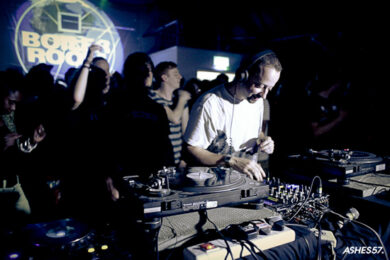What to do if you’re a young person on a Tuesday night? In days of yore you might have switched on the telly and listlessly flicked through the channels. But no self-respecting under-25 forks out for a TV licence any more (Dear Govt.: No quantity of absurdly threatening letters through my door will encourage me to buy one. Have you heard of iPlayer?). The 21st century equivalent to surfing the channels is probably staring slackjawed at a computer screen, alternating between Twitter and Facebook, tabbing various interesting-looking articles and Youtube videos which will undoubtedly languish un-examined (‘saved for later’), following an elusive trail of online miscellany which purports to lead to at least a few morsels of entertainment, but more often than not leads nowhere. Increasingly, though, that unravelled ball of digital yarn snaking through the labyrinthine recesses of the internet will lead you somewhere very entertaining indeed. That place is the Boiler Room.
Founded little more than a year ago as an adjunct to trendy ephemera mag Platform, what started as a tiny enterprise has far outgrown its parent brand. The concept is simple: a clutch of highly respected DJs from the dance music underground, along with a small, invite-only crowd, gather in a small space in London (originally the boiler room of a warehouse space, now the second room of Lambeth’s excellent Corsica Studios). A live audiovisual stream is set up, and between the hours of eight and 11 in the evening said DJs perform – ostensibly to the crowd, though they are facing the webcam with their backs to the people in the room. Much like a regular clubnight, the DJs are given fixed set times in which to say their piece, the crowd (supposedly) dance when they hear music they like, and the Red Stripe flows. Unlike a regular clubnight, people from anywhere in the world can watch the proceedings from the comfort of their own homes, logging into live broadcasting website Ustream and communicating with other viewers via a chatroom.
When you think about it, it seems odd that nobody’s thought of it before. In fact, plenty of people have, and several other dance music promoters/connoisseurs have capitalised on the increasing accessibility and technical feasibility of services like Ustream – Dommune in Japan and Percussion Lab in New York instantly spring to mind. But Boiler Room are the undisputed kingpins in this new game. In addition to their own weekly events – which have played host to practically everybody in the scene from Four Tet to (Quietus favourite, heh) James Blake via Hyperdub and Hotflush – the Boiler Room has been pressed into service by a range of dance music institutions. Dubstep bastion DMZ had them broadcast from their sixth birthday event, Mancunian young guns Hoya:Hoya from their third. Both SXSW and Sonar festivals have solicited the Boiler Room treatment this year. The regular London night has even spread its wings to the continent, with a Berlin counterpart inaugurated last month.
Alongside the hosts of enthusiasts queuing up to participate in the Boiler Room phenomenon, though, there have of course been some naysayers. A principal criticism – particularly from those not born directly into the wombing embrace of the internet (i.e. the over 23s) – is the level of disconnectedness for viewers at home. Surely experiencing a clubnight through a low bit rate stream is a far from satisfying experience? Who wants to express their appreciation of a particularly incendiary bassline through the medium of chatroom emoticons, rather than the more fleshy resources of their own body? Isn’t dance music all about physicality?
It should be said that the notion of inviting home viewers to be third-party voyeurs in a musical happening isn’t a new one: television, on both sides of the pond, has been cashing in on the idea for decades. Breaking onto the national stage in 1957, the US had American Bandstand – from 1964, we had Top of the Pops. Both shows broadcast a selection of songs from that week’s Top 40, lip-synched by the performers in front of a studio audience of dancing teenagers. It strikes me as interesting that part of what made the format so enduring was the inclusion of that audience; it wasn’t just the music that was on display, but the ritual of pop music performance itself. As decade begat decade, the behaviour of the attendant teenagers would develop along with the music – dress sense, dance moves, facial expressions. The viewer at home was clearly not wholly part of the dialogue between performer and audience, but at the same time wasn’t totally removed from it. Theirs was a privileged position of facial close-ups and (later on) whizzy extreme-angle shots (excuse my terminology) – the limited sensory potential of the television screen compensated for by an augmentation of the visual.
Of course, all of this occurred within the ‘concert hall’ framework so beloved by most forms of pop and rock music up to the present day: performer on stage, exerting his/her/their magnetic pull on the viewer; audience down below, faces upturned, drinking it in. Starting in the early 70s in the US, Soul Train took this format and applied it more specifically to black music – soul, R&B, later disco and rap. But in doing so they also adapted the format to be true to the dynamic of the musical culture; along with on-stage performances, the ‘Soul Train Line’ was a regular fixture, in which dancers formed two lines and took it in turns to strut their stuff to the camera. The balance of power between performer and audience was shifted, subtly but importantly.
The New Dance Show took this format to the Detroit scene of the late 80s, broadcasting on local station WGPR-TV 62 just as techno was a burgeoning form. In some ways it was Soul Train without the budget, but the pragmatic demands of this new music wrought some significant changes on the format: principally, the DJs who provided the brief five or ten minute ‘mixes’ to be danced to were practically invisible, referred to only by name. The stars here were the dancers, in all their grinding, jacking glory.
This was the same basic concept as seen in American Bandstand three decades earlier – to create a facsimile of the rituals of musical performance, tailored for the demands of broadcast television – but it was adapted to suit an entirely new musical form. Where the likes of Top of the Pops had granted home viewers the position of ‘privileged audience member’ – enjoying camera angles which would be impossible for a real audience member to experience, but still basically adhering to the performer-audience dynamic – The New Dance Show placed the viewer in the thick of what Daniel Barrow so excellently described as ‘the horizontal, rhizomatic congress of the dancefloor’. Of course, there was still a glaze of unreality to it all – the slightly forced smiles, the rickety, oddly lit sets, the gent at the back trying just a little too hard to impress. But, before the reality TV explosion of the 2000s (which, might I add, was a post-internet phenomenon), artifice was de rigeur for television (especially low-budget television). The New Dance Show played a pivotal role in the emergence of techno and house, breaking each fresh iteration of the music to the tightly focused, hyper-local audience whose passion and dynamic energy (and record-buying power) would drive it into the global consciousness.
So how does The New Dance Show compare to its 21st century counterpart? Both, after all, are dealing in essentially the same musical-social phenomenon, albeit three decades apart. Both are aimed at specialist audiences – though the geographically ‘local’ Detroit audience, reached through the TV screen, are replaced by a community scattered across the globe, unified through the internet.
In fact they’re surprisingly different. For a start, there’s the placement of the gaze. The New Dance Show‘s dancefloor cameramen, engrossed in the action, are replaced by a static webcam, fixed unremittingly on the performer in a way that bears no comparison to the experience of a club-goer. Rather than being part of a dynamic happening, the Boiler Room audience are really just a two-dimensional background to the main attraction: the DJ. They also don’t dance… Well, barely. It’s almost a Boiler Room cliche that members of the chatroom will complain about the distinct lack of kinesis on the dancefloor (also that they will pass comment on any unfortunate young female close enough to pick out).
Is it that people don’t dance in clubs any more? A more likely explanation is that the invited audience, the ‘meat in the room’, take themselves far too seriously to let a little something like physical enjoyment of music jeopardise their carefully constructed image (speaking as somebody who’s been that meat on one occasion, we definitely do). A friend remarked that the Boiler Room – for all its excellent curatorial skills, the dozens upon dozens of talented DJs, the countless hours of exceptional music – is basically made for the anoraks: the trainspotters who hover next to the booth, anxiously waiting for the next drop so they can ask the DJ for a tune ID. That’s probably an unfair assessment. But what does it say about dance music 2011 that this curious format, which seems to downplay or ignore a lot of what makes dance music so special – in many ways returning to a performer-centric dynamic of which the underground claims to disapprove – passes for a media phenomenon, a leading light of the scene? Don’t get me wrong, The New Dance Show is far from perfect, and often hilariously dated and clunky. But it seems to capture the empowering, egalitarian spirit of dance music where its successor perhaps shoots wide of the mark.
Paul Virilio is a French cultural theorist, whose writings on the unstoppable forward march of technology strike an at best dystopian tone. In 2000 he wrote a slim (but dense) volume called The Information Bomb, in which his observations and predictions on the effects of globalisation and the internet go firmly against the web-utopian grain. Of particular interest are his thoughts on the then growing trend for live webcams, streaming images from locations around the world which could be accessed online. Referring to a particular case, in which a (presumably slightly unhinged) woman set up 14 webcams to broadcast images of her home, asking internet users to alert her of any paranormal activity they spotted, he pointed out that:
“This anecdote shows strikingly the emergence of a new kind of ‘tele-vision’, a television which no longer has the task of informing or entertaining the mass of viewers, but of exposing and invading individuals’ domestic space, like a new form of lighting, which is capable of revolutionizing the notion of ‘neighbourhood unit’, or of a building or district.”
Replace ‘domestic’ with ‘club’ and his words seem prescient. The Boiler Room isn’t an artificial space, carefully constructed and professionally lit for the purposes of entertainment – it’s a real place, where a real event is happening, illuminated by the clinical glow of the internet. And the effect of this is oddly, paradoxically, alienating. It also, to paraphrase, revolutionises the notion of a clubgoing scene. Even in our age of hyper-connectedness, DJs will often admit a fondness for a particular city (‘The Hamburg crowd always goes wild’). Somehow we still cling on to localised urban identities, defined through geography as much as through taste. The Boiler Room format seems inclined to dilute that identity. As Virilio puts it, “[The] ‘local city’ is now only a district, one borough among others of the invisible ‘world meta-city’ whose centre is everywhere and whose circumference nowhere.”
It seems extravagant to suggest that this way of presenting dance music may grow to eclipse actual clubgoing. And yet, in the internet age, something about the Boiler Room feels almost incontrovertibly logical. Its exponential growth, and the readiness of established promoters to make use of it or employ its techniques, suggests that we’ll be seeing many more Ustream-style events in the future. And given the ever more dispersed audiences for specialist music – not to mention the gradual gentrification, the driving-out of the poor and bohemian, in cities such as London, coupled with ever more draconian noise and licensing regulations – how long until clubbing IRL becomes the sole preserve of trendy wine bars and soulless mega brands?
I’m aware that that’s a slightly gloomy prediction. It’s important to remember that, for all its potential downsides, the Boiler Room is playing an increasingly vital role in dance music’s new online ecology. Virilio again, referring to the disorientating effect of the internet’s global reach:
“Without the aid of the ‘artificial horizon’ of multi-media, there is no possible way of navigating the electronic ether of globalization.”
Much has been written recently on the confused and arguably directionless state of dance music post-internet. How to navigate the blurred boundaries between professional and amateur, honest and disingenuous, genuine critique and disguised PR, in this new world order? How to differentiate between what you like and what you’ve been told to like over and over again? The Boiler Room places the DJ – and the music he or she plays – as close as they can possibly get to their natural habitat within the constraints of the online medium. As a source for information on dance music, it will trump websites like this one in both honesty and directness every time. If you want to learn at the feet of the masters, go over there now and fill yer boots.





